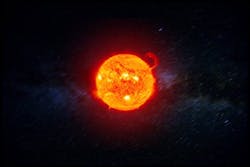NASA selects Southwest Research Institute to build trio of coronagraphs for NOAA space weather program
WASHINGTON - NASA, on behalf of the National Oceanic and Atmospheric Administration (NOAA), has selected Southwest Research Institute of San Antonio to build three coronagraphs for the Lagrange 1 Series project, part of NOAA’s Space Weather Next program, Abbey A. Donaldson writes for NASA. Continue reading original article.
The Military & Aerospace Electronics take:
18 November 2024 - The contract includes all aspects of coronagraph production, from design and fabrication to testing, launch support, and post-launch operations at the NOAA Satellite Operations Facility.
The coronagraphs will monitor the Sun's outer atmosphere, or corona, detecting Earth-directed coronal mass ejections to provide advanced warning for geomagnetic storms. This early detection allows organizations to protect critical infrastructure from space weather effects. The instruments will also ensure data continuity with NOAA's Space Weather Follow-On Lagrange 1 mission.
Related: NOAA taps Lockheed Martin to provide next-gen lightning mapping instruments
Related: NOAA taps BAE to build ocean color instrument for GeoXO constellation
Related: NASA integrates coronagraph on the Roman Space Telescope
Jamie Whitney, Senior Editor
Military + Aerospace Electronics
